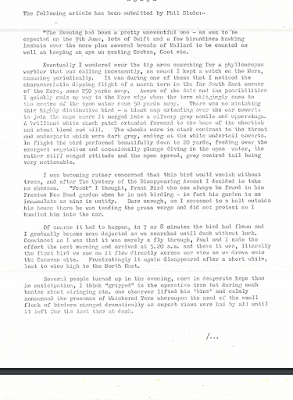A Tawny Owl hooted from the trees in the next door neighbour’s garden: it was very dark with little time to look, but the owl was very close. The owls breed in a nearby copse, our garden on the edge of their territory.
This morning was my first ringing trip to Oakenclough for 2019; ahead lay a forty minute drive. Near Out Rawcliffe there was a roadside Little Owl and then 500 yards further on, a Tawny Owl on overhead wires, but there was no point in stopping in the half-light of 0700.
I met Andy at 0725 and noted how the mornings are getting lighter but not necessarily any warmer at a finger tingling 3°C. Some folk might consider mid-Feb to be still winter but birds don’t have a calendar taped to the kitchen cupboard, only instinct to tell them when the time is right, just as those early morning owls announced.
Little Owl
Visits here at Oakenclough in 2018 provided 870 captures, 767 new birds and 103 recaptures. Once autumn migration was over we packed up in early November when the weather took a turn towards winter. The site at some 550ft/168 metres above sea level doesn't hold many midwinter birds. The decent catches are in spring and autumn as our results show e.g. 151 Goldfinch, 98 Chaffinch , 88 Redwing, 58 Meadow Pipit, 14 Tree Pipit, 52 Lesser Redpoll, 19 Blackcap and 39 Goldcrest.
We try to filter out the tit family, mainly because in general they provide little information or data over and above that already known; but as a bi-catch we still managed 60 Blue Tit, 48 Great Tit and 18 Coal Tit.
Andy’s dozen or so birds on Monday spurred our decision to have another go this morning but the catching proved slow and unproductive apart from ever-dependable Goldfinches. We caught just 10 birds - 6 Goldfinch, 3 Blue Tit and 1 Chaffinch. Many of the Goldfinches are in fine fettle, the silvery bills of the older males elongated enough to sex the bird without additional features.
Goldfinch
The most unusual occurrence came with the realisation that a Blue Tit AKC5385 had not been ringed by ourselves but by another ringer – “probably just down the road in Garstang” we remarked ungraciously, knowing that Blue Tits are not renowned itinerants.
Blue Tit
As the morning warmed signs of spring came by way of singing Mistle Thrush (2), Song Thrush, Great Tit and Coal Tit with a drumming Great-spotted Woodpecker providing the backing track.
Mistle Thrush
We saw fly-overs of Buzzard, Sparrowhawk, Kestrel and Raven. It was a Sparrowhawk over the nearby reservoir that sent 150+ Lapwings into the air, a number of which carried on into the nearby hills where some, but sadly not enough, will stay to breed. Likewise, flights of piping Oystercatcher flew across the water to nearby fields for their own early spring rehearsals.
Linking today to Anni's Birding and Eileen's Saturday.
Linking today to Anni's Birding and Eileen's Saturday.

































































.jpg)














